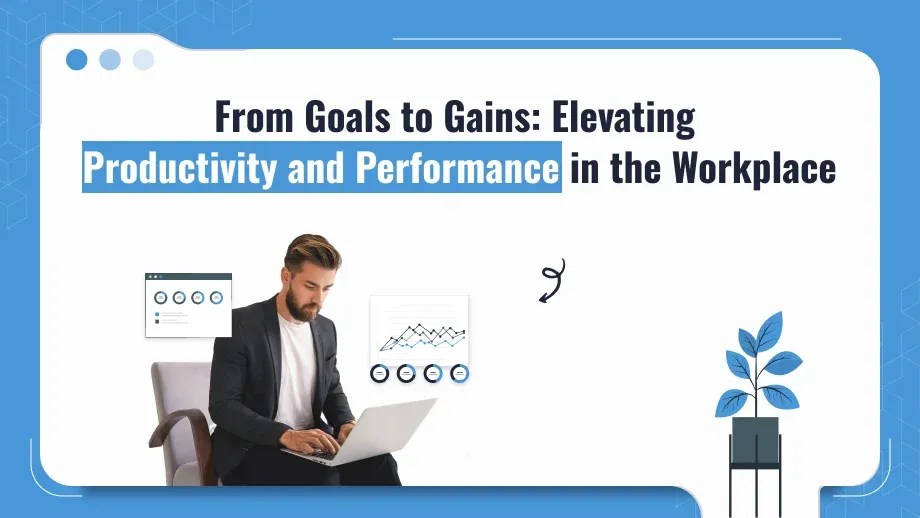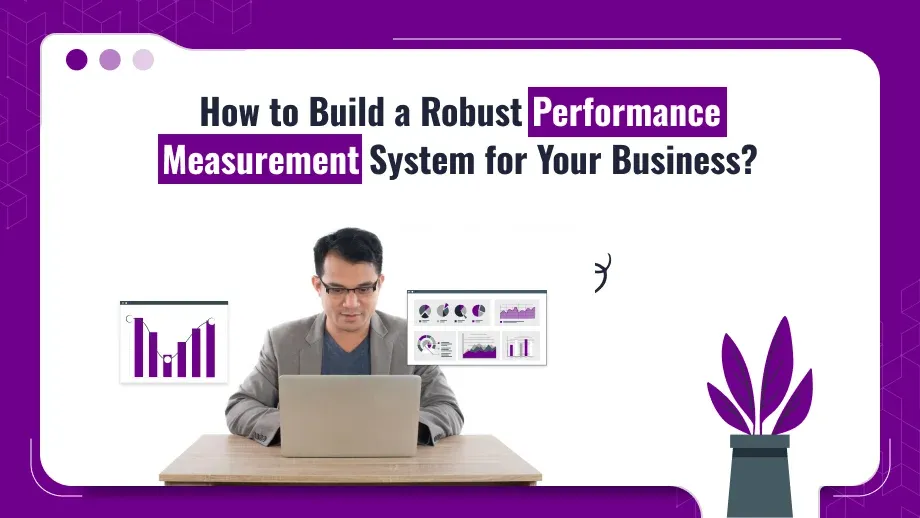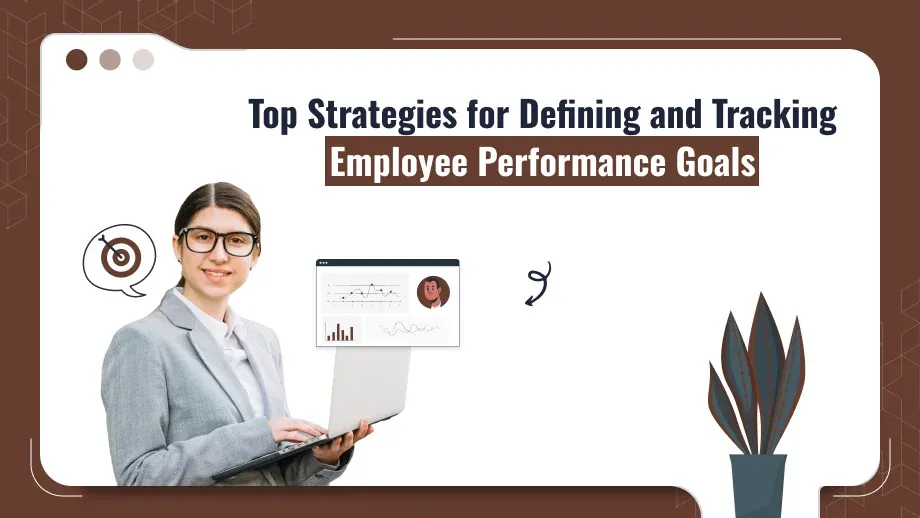
Today, in the fast-moving business environment, productivity and performance are two critical aspects that define organizational and employees’ success. Continuous innovation by companies for better resource management, task accomplishment, and goal achievement characterizes the modern business environment.
Enhancement of productivity is about how much productivity is achieved in performing the task, while improvement of performance is about the quality and effectiveness of that task. These two aspects coexist to create powerful synergy that drives individual as well as organizational success.
This post will aim to go into specifics regarding what defines and separates productivity vs performance, why they are important, and how one can take concrete steps to enhance both as an agent working for any organization.
Productivity vs Performance: Understanding the Difference
To get started, here are the definitions of the two concepts:
Productivity refers to the amount of goods accomplished in an efficient way, which is often measured by the output quantity per unit of input like time, labor, or any other materials applied. High productivity means that more work is performed with fewer resources and less time.
Thus, performance measures how well the tasks would be accomplished and the outcome realized. Though productivity may focus on the quantity of work done, performance emphasizes more on the quality-meaning that the work accomplished must meet or exceed the specified standards and objectives.
In short, productivity is doing more with less while performance is doing it well. Of course, as necessary as either one is, it’s hard to improve one without ruining the other. That could be high productivity but low performance-to just rush out not so great work; or strong performance but low productivity-to only be inefficient.
Lastly, the difference between productivity and efficiency must also be accounted for. Although oftentimes the terms are used on the same basis and seem often virtually synonymous, they point, in fact, to two different things. Efficiency is getting the best possible outcome while wasting fewer resources, less time, or effort to do something. It deals with the method and process of bringing about a result. Productivity, on the other hand, is about maximizing output.
For instance, an employee who finishes a task with fewer resources but with excellent results is efficient. The one who manages to finish many tasks fast and perhaps with a low outcome is productive. In an ideal situation, an organization would then like to be both productive and efficient simultaneously, ensuring high levels of performance.
Importance of Productivity and Performance
1. Competitive Advantage
In the highly competitive market today, only the genuinely productive organizations can maintain powerful performance, hence placing them at success. They complete a project faster, of higher quality, and at lesser cost than their competitors and other organizations. Therefore, they can promptly respond to changing customer needs and catch up with changes expected in the industry and the world at large.
2. Employee Engagement and Morale
This means that the employees are performance and productivity since they feel fulfilled at work while working to bring about results and motivation. This consequently allies well with talent retention, and an appropriate engagement has to be built to boost employee motivation and not be clients but customers in the other sense.
A more engrossed workforce will be more willing to go the extra mile to ensure that the company prospers.
3. Financial Health
Higher productivity and higher performance will impact the bottom line for a company. For example, improved operational efficiency to produce high-quality deliverables would likely reduce waste and costs while at the same time increase profitability. Better than that, though, higher customer satisfaction translates into more repeat business or referrals, making for a positive cycle.
4. Flexibility and Growth
In a changing business environment, companies, if focused on productivity and performance, will be agile. It is easy to pivot with new technologies along with adaptation in the market change process while maintaining quality as well as speed.
Explore how our cutting-edge HRMS and Performance Management solutions can transform your workplace.
Book a free demo today and see the difference for yourself.
9 Techniques to Boost Productivity and Performance
Productivity and performance improvement can be strategic and multifaceted. Here are some of the several key strategies that include the following:
1. Create Smelly and Quantifiable Objectives
Good clarification and specificity of goals are one of the best ways for productivity and performance development in teams. When employees really know what they are working for, it becomes much easier to concentrate and prioritize what they do.
Goal setting must follow SMART criteria, which comprise specifics, measurables, achievables, relevancies, and time-bound aspects. Clear goals are motivating for employees as well as how the employees should use their time and energy.
2. Leveraging Technology for Automation
Technology is important in today’s digital age in terms of productivity as well as performance. Automated tools and software would help much save time from redundant tasks such as entries, scheduling, or some kind of administrative work. The employees can be left to perform high-value tasks.
Project management tools come in the form of Asana, Trello, or Monday. These go a long way in streamlining workflows and tracking progress and collaboration among teams.
A time-tracking tool is through Toggl or Clockify, which helps employees maintain a strategy of time management, thereby ensuring work is efficiently done. For knowledge workers who consume large amounts of content, AI-powered knowledge management tools like Recall can significantly boost productivity by automatically summarizing and organizing research materials, articles, and documents into a searchable knowledge base.
Organizations embracing technology will avoid; errrored information, speedy processes, and the fact that employees will be working at their most productive levels.
3. Task Management and Time Management Overlie
Boosting productivity requires having effective task management, and not all work is equal, so a worker must learn the priority of tasks that are truly important.
There is also the Eisenhower Matrix, which classifies the task to be done into four quadrants: urgent and important, important but not urgent, urgent but not important, and neither urgent nor important. In using such a method, time is minimized on waste activities and maximized on high-impact ones.
Time management should also be promoted. Encourage the employees to adopt something like the Pomodoro Technique-as they work for longer periods followed by short intervals-and time-blocking to help them not burn out.
4. Inspire an Open Collaborative Workplace
A supporting collaborative culture facilitates creativity, problem solving, and diffusion of knowledge-all factors necessary to enhance performance. Collaborative teams work faster, bring different perspectives, and help each other overcome challenges.
Encourage open communication and team-building activities to foster a culture of trust and cooperation. Regular check-ins, meetings, and brainstorming sessions will also enable the efforts of the team to be aligned and ensure everybody is working in the same direction.
5. Invest in Employee Development and Training
A highly skilled workforce is both productive and high performing. The ongoing development opportunities open up avenues to the worker acquiring new skills, improve existing ones, and rise to stay competitive in the workplace.
Workshops, online courses, and mentorship can be excellent investments in employee growth. This is beneficial to both the organization and increases the engagement and retention of employees.
6. Promote work-life balance
It is ironic to state, but encouraging employees to take breaks and, in the process, maintaining a proper work-life balance is indispensable toward higher sustainable productivity and performance. Overworked employees develop a trend towards burnout, which cuts their efficiency and the quality of their work dramatically.
Encourage working culture that defines breaks, uses your vacation time, and maintains the separation between personal and work life. In that way, employees will be more energized and focused to maintain productivity to desired levels for longer periods of time.
7. Recognition of Achievements and Rewards
Recognition is a great motivator. The impression of their hard efforts being noticed and valued ensures that employees will keep up the good work at high performance levels.
Introduce an appreciation plan to recognize employee achievement at individual and team levels. Such appreciation can be as simple as good word-of-mouth in the team, or goodies and gift cards, or paid time off.
8. Use a performance management system
A Performance Management System can be used by organizations to monitor and improve daily employee productivity and performance. It develops a formal process to initiate goals, track progress, and provide feedback. The Performance Management system can be designed for employees to always be in alignment with what is expected of them in the company, continually enhance their ability and competence, and receive constructive feedback for better performance.
9. Adopt a Performance Management Model
Different Performance Management Model can be leveraged by organizations to have their improvement efforts structured. Popular ones such as the Balanced Scorecard or 360-Degree Feedback are sure to make performance evaluations holistic, looking into both individual contributions and team dynamics. These models give a full view of how well employees are doing, what areas they need to improve on, and even how to enhance their productivity.
Conclusion
An efficient performance accompanied by productivity is the hallmark of a successful and thriving organization. Such an aim would be realized through the implementation of strategies in goal setting, use of technology, pursuit of time management, collaboration, and development of employees.
Those factors are prioritized not only as a result of improved business results but also so that employees have a work environment that keeps them engaged, motivated, and valued. The proper Performance Management System and Performance Management Model will release the full organization potential to sustain competitiveness as well as drive long-term success.






